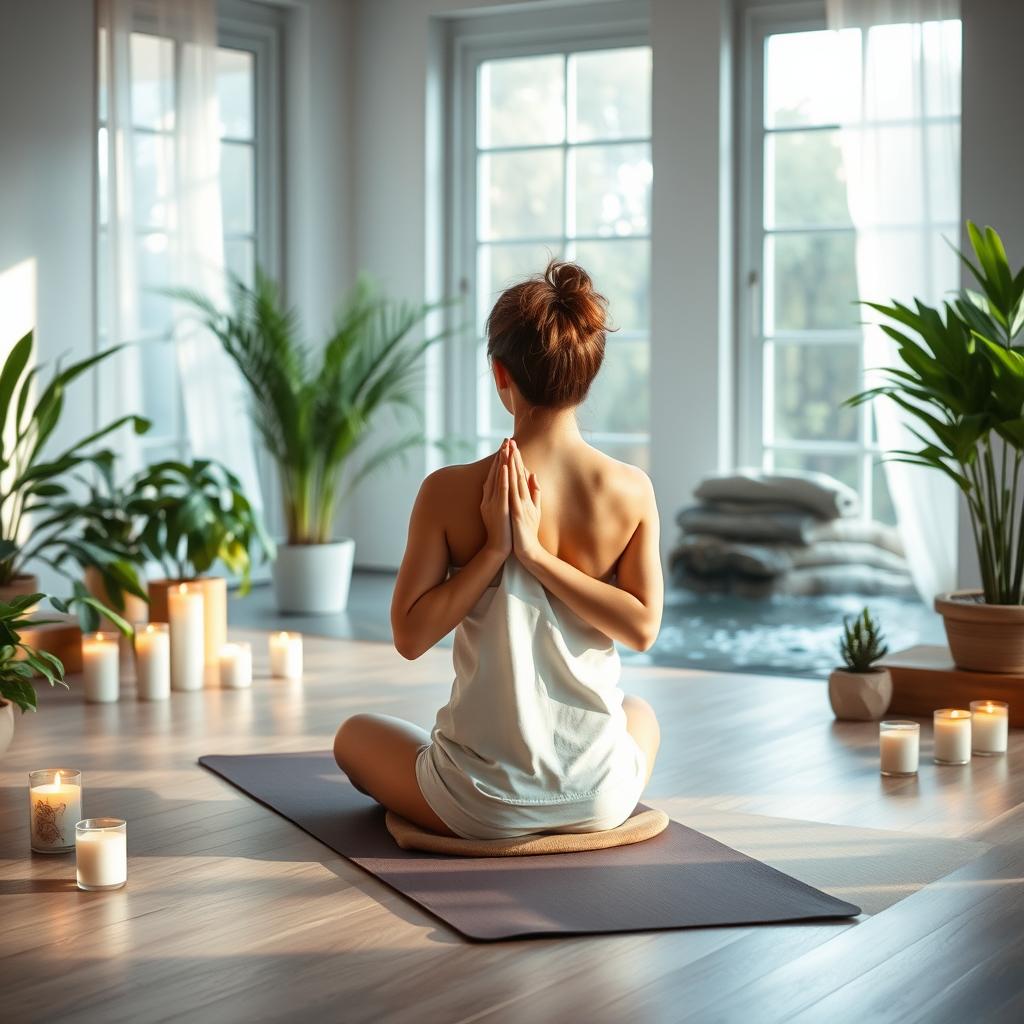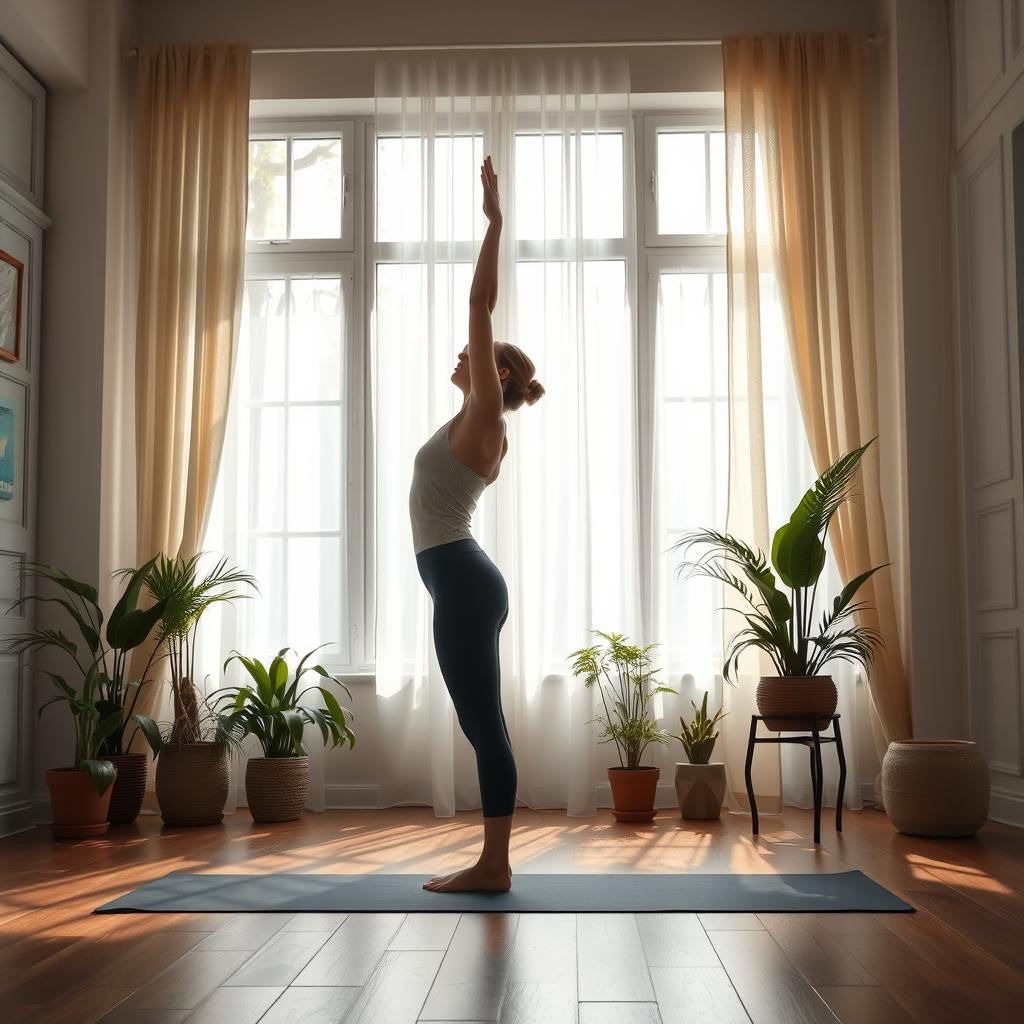Imagine being able to relax and release all tension in your body. You find calm and serenity that lasts all day. Deep relaxation and inner peace can change your life. By adding deep relaxation to your daily routine, you can lower stress and anxiety. This improves your overall well-being.
In today’s fast world, it’s easy to get lost in daily life. But, it’s key to focus on your mental and emotional health. Deep relaxation is a strong tool for this. With the right techniques, you can find peace in just a few minutes a day.
Exploring deep relaxation, you’ll see it’s more than just calm. It’s about connecting deeply with yourself and the world. Techniques like deep breathing, meditation, and mindfulness quiet your mind and soothe your body. This guide will help you find deep relaxation and inner peace. You’ll live a happier, healthier life.
Understanding Deep Relaxation
Starting your journey to deep relaxation and inner peace is exciting. It’s key to know what deep relaxation is. It’s a state where your mind and body are at complete rest, free from stress and anxiety. You can reach this state through mindfulness and stress relief exercises.
Practicing mindfulness helps you notice your thoughts and feelings. This lets you release negative emotions and stay in the present. Stress relief methods like deep breathing and meditation calm your mind and body. They help reduce anxiety and boost your well-being.
What Is Deep Relaxation?
Deep relaxation is feeling completely calm and tranquil. It’s a state you can reach with regular practice and patience. By adding mindfulness and stress relief to your daily life, you can enjoy deep relaxation’s benefits and better your well-being.
The Benefits of Deep Relaxation
Deep relaxation offers many advantages, like better sleep, improved focus, and less stress. It makes you feel more grounded and centered. This helps you face life’s challenges with a clear mind and calmness.
Some main benefits of deep relaxation are:
- Reduced stress and anxiety
- Improved sleep quality
- Increased focus and concentration
- Improved overall well-being
By making deep relaxation a part of your daily routine, you can enjoy these benefits. This improves your life’s quality.
The Journey Toward Inner Peace
Starting this journey means listening to your inner self. It’s about taking a break, tuning into your thoughts and feelings. You’ll learn what you truly want and need.
By doing this, you’ll make room for meditation and deep breathing in your daily life. These practices help quiet your mind and connect with your inner self. This way, you can find peace, even when things get tough.
As you keep going, meditation and deep breathing will become key for facing life’s hurdles. They help you stay calm and focused. This makes it easier to make decisions and keep your priorities straight.
Listening to Your Inner Self
This journey requires being quiet and open to your inner wisdom. It lets you understand yourself and the world better. You’ll be ready to handle life’s ups and downs more easily.
Experiencing Peace in Daily Life
As you grow in inner peace, you’ll see it in your everyday life. You’ll feel more grounded and at peace, even when things are chaotic. This peace will guide you, helping you face challenges with ease and clarity.
Techniques for Achieving Deep Relaxation
Starting your journey to deep relaxation is exciting. It’s key to try different techniques to find what works best for you. One great way is to add relaxation exercises to your daily routine. Just take a few minutes each day to focus on your breath. Notice how the air feels moving in and out of your body.
Guided imagery is another powerful tool. It uses your imagination to take you to a peaceful place. You can listen to guided recordings or create your own scenarios. Imagine yourself in a calm spot, like a beach or forest, surrounded by soothing sounds and feelings. This helps quiet your mind and release tension, making you feel relaxed and calm.
Breathing Exercises You Can Try
- Diaphragmatic breathing: focus on expanding your belly as you inhale, not shallow chest breathing
- 4-7-8 breathing: inhale for 4 counts, hold for 7, and exhale for 8
- Box breathing: inhale for 4 counts, hold for 4, exhale for 4, and hold again for 4
By adding these relaxation exercises and guided imagery to your daily life, you can lower stress and anxiety. This improves your overall well-being. The important thing is to be consistent and patient. Give yourself the time and space to relax and unwind.

Guided Imagery for Relaxation
Guided imagery is a strong tool for deep relaxation. It connects you with your subconscious mind, helping you release tension and stress. By using guided recordings or creating your own scenarios, you can find a peaceful place. This place is filled with calming sounds and sensations.
Creating a Relaxing Space at Home
Starting your journey to deep relaxation means making a calm space at home. Your home can be a peaceful place to relax and forget daily worries. Adding elements that help you relax can make your space better for your well-being.
Think about your space’s feel. Soft lights, comfy seats, and calm colors make it peaceful. Adding plants or a water feature brings tranquility. Also, try progressive muscle relaxation to release tension and relax.
Choosing the Right Environment
Choose a quiet, comfy spot for relaxation. A room with low noise and the right temperature is best. Calming scents like lavender or vanilla can also make it more relaxing.
Incorporating Nature Elements
Nature calms the mind and soothes the soul. Adding plants, flowers, or a water feature brings peace. Natural materials like wood or stone make the space cozy and inviting.
Creating a relaxing home space and using deep relaxation techniques like progressive muscle relaxation can boost your well-being. It’s key to make a space that supports your relaxation journey.
- Using soft lighting to create a calming ambiance
- Incorporating nature elements, such as plants or a water feature
- Practicing progressive muscle relaxation to release physical tension
- Using calming scents, such as lavender or vanilla, to create a soothing atmosphere
Follow these tips to make a relaxing home space that supports your deep relaxation journey.
The Role of Mindfulness in Deep Relaxation
Mindfulness is key to deep relaxation. It helps you stay in the moment, reducing stress and anxiety. This improves your overall well-being.
Practicing mindfulness daily is important. Focus on your breath and notice your surroundings. This includes sights, sounds, and smells.
Practicing Mindfulness Throughout the Day
To add mindfulness to your day, try these steps:
- Take a few minutes each day to focus on your breath
- Pay attention to your thoughts and emotions, without judgment
- Notice the sensations in your body, such as tension or relaxation
Connecting with Your Surroundings
Connecting with your surroundings can deepen relaxation. Take a walk in nature and notice everything around you. Use relaxation techniques like progressive muscle relaxation or visualization to unwind.
The core of mindfulness is being present without judgment. By adding mindfulness and relaxation techniques to your day, you’ll feel more relaxed and improve your well-being.
| Mindfulness Practice | Benefits |
|---|---|
| Focusing on breath | Reduces stress and anxiety |
| Paying attention to surroundings | Increases sense of relaxation and calm |
| Noticing thoughts and emotions | Improves emotional regulation and well-being |
The Benefits of Deep Stretching
Deep stretching is key for finding deep relaxation and inner peace. It helps reduce stress and anxiety by releasing physical tension. Adding simple stretches to your day can boost your well-being and make meditation more effective.
Deep stretching connects you with your body, helping you feel areas of tension. This connection is vital for deep relaxation. As you stretch, focus on your breath and let go of worries. This makes you present in the moment, similar to meditation.
Simple Stretches for Relaxation
- Neck stretches to release tension in the neck and shoulders
- Shoulder rolls to loosen up tight muscles
- Chest opens to expand the chest and improve breathing

The Mind-Body Connection
Deep stretching and meditation help you connect with your body. This connection is key for deep relaxation. It lets you tune into your physical and emotional needs, promoting relaxation and reducing stress.
As you keep practicing, you’ll manage stress and anxiety better. You’ll feel more calm and well.
Embracing the Power of Music
Music is a key part of finding deep relaxation and inner peace. Adding calming tunes to your day can make a big difference. It helps create a peaceful space for deep breathing and relaxation. Music is great for unwinding, whether you’re doing relaxation exercises or just need to relax after a long day.
Music is a good start for a relaxing space. Make a playlist with calming tunes to help you relax. Nature sounds, instrumental music, and soft vocal tracks are good choices. These can slow your heart rate, lower blood pressure, and encourage deep breathing.
Calming Tunes to Enhance Relaxation
Here are some calming tunes for relaxation:
- Nature sounds, such as rain or ocean waves
- Instrumental music, such as piano or guitar
- Soft vocal tracks, such as lullabies or gentle melodies
Creating Your Personal Playlist
Make a playlist that fits your needs and likes. Try different genres, tempos, and moods to find what relaxes you best. Your playlist can be a powerful tool for deep relaxation and inner peace, whether you’re doing relaxation exercises or just need some quiet time.
| Music Type | Benefits |
|---|---|
| Nature Sounds | Promotes deep breathing, reduces stress |
| Instrumental Music | Helps slow down heart rate, lowers blood pressure |
| Soft Vocal Tracks | Creates a calming atmosphere, promotes relaxation |
Overcoming Stressful Thoughts
Life can be complex, and stressful thoughts are common. But, you can manage anxiety and beat negative thoughts. Guided imagery helps you find peace by imagining a calm place.
Progressive muscle relaxation also works. It helps you relax by releasing physical tension. Changing your thoughts to positive ones can also help. This includes practicing mindfulness and letting go of worries.
Techniques to Manage Anxiety
- Practice deep breathing exercises to calm your mind and body
- Use guided imagery to visualize a peaceful and relaxing environment
- Engage in progressive muscle relaxation to release physical tension
- Focus on positive affirmations to reframe negative thoughts
Using these methods daily can help you handle stressful thoughts better. Be kind to yourself as you face tough emotions and thoughts.
Reframing Negative Thoughts
Your thoughts don’t always show reality. Learning to change negative thoughts to positive ones can improve your mind. This includes being kind to yourself and growing your mindset.
Integrating Deep Relaxation into Your Routine
Adding deep relaxation to your daily life can change your inner peace and well-being. It’s not about finding more time. It’s about making self-care a must in your routine.
Making Time for Yourself
Begin by setting aside a few minutes each day. Even 5-10 minutes can make a big difference. Use this time for deep breathing or meditation.
Setting Realistic Goals for Relaxation
Don’t set too high goals for relaxation. Start with small steps, like deep breathing twice a day or a short meditation before bed. As you get better, you can do more.
Remember, finding deep relaxation is a personal journey. Be patient, celebrate your wins, and keep going. With effort, you’ll see the benefits of caring for your mind and heart.